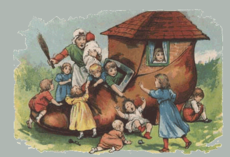
A limerick poem is a short, funny (goofy!) poem that’s quick and easy to write. Although limericks feel playful, this form of poetry comes with a lot of interesting history and writing techniques. Here are some tips to help you learn how to write a limerick yourself — and some limericks from our Power Poets for inspiration:
- Origin Story. Well, no one knows for sure but most people believe that the term “limerick” came from either the city or County of Limerick in Ireland. The English poet Edward Lear popularized the limerick form, but he didn’t create the term “limerick.”
- Nonsense Makes Sense. Limerick poems are also called “nonsense” poems because they tell a story that is blunt and humorous with quirky or playful words that don’t necessarily make sense. Feel free to make up your own words (Shakespeare did it all the time!) just as long as their meaning is implied.
- First Impressions Are Important. The first line of the limerick should set up the character(s) and setting of the poem, so the reader knows right away who/what the story is about. You only have 5 lines to work with, so it's important when learning how to write a limerick to set the stage early!
- Lean into the Rhyme. Limerick poems have an AABBA rhyme scheme, which means the first, second, and last lines rhyme while the third and fourth lines separately rhyme, too. Pretty simple, right?
- Make it Bouncy. Musicality plays a huge role in limerick poems, as they have a bouncy tune when read out loud. The first two lines have eight beats while the third and fourth have six, and the last line again has eight. Many children’s nursery rhymes are limericks because their bouncy rhythm makes them easy to recite. Remember “Hickory Dickory Dock?” Yup, that’s a limerick.
Read through some of these examples of limericks below, to get a better sense of their flow and feel.
"There Once Was a Man from Nantucket" by Anonymous
There once was a man from Nantucket
Who kept all his cash in a bucket.
But his daughter, named Nan,
Ran away with a man
And as for the bucket, Nantucket.
"There Was a Young Lady Whose Bonnet" by Edward Lear
There was a Young Lady whose bonnet,
Came untied when the birds sate upon it;
But she said: 'I don't care!
All the birds in the air
Are welcome to sit on my bonnet!'
Feeling ready to write your own silly story? Now that you know how to write a limerick, you can learn how to post it on Power Poetry for more feedback from other poets like you. And once you've mastered the limerick, you can explore other poetry tips for info. on odes, free verse poems, slam poetry, and more!
